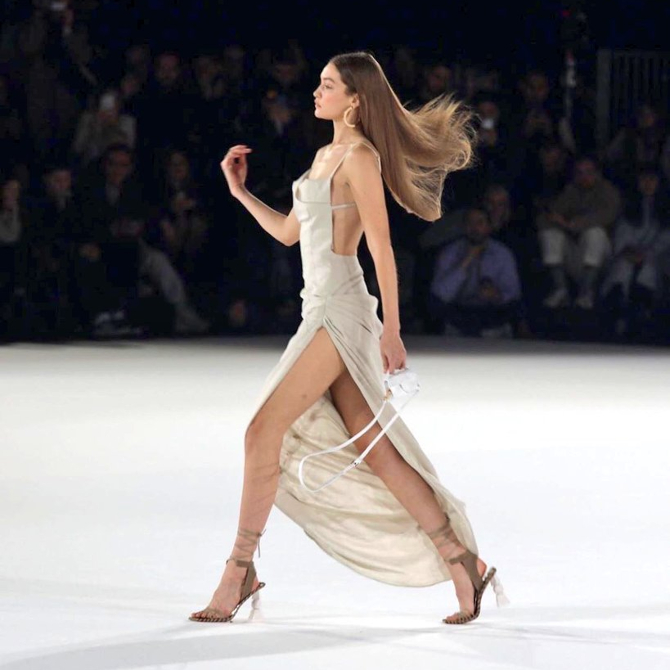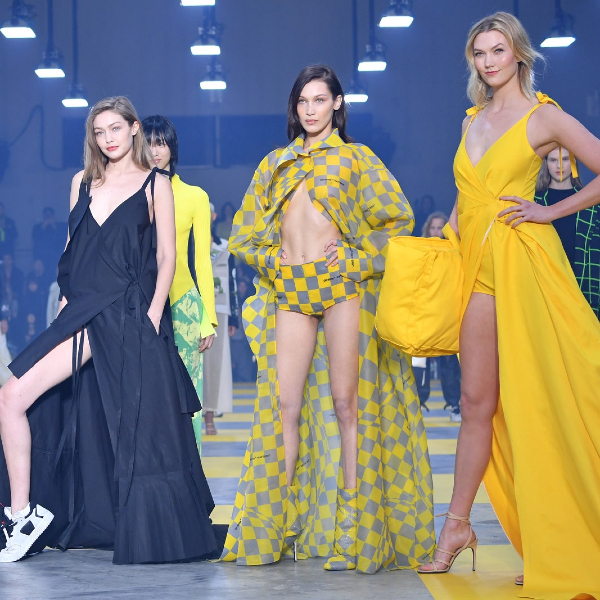Do we really need models? With virtual reality on the rise, we wonder what that means for the future of fashion

So, if you want a short and simple answer: yes we need and love models, but the reality is that the answer isn’t so clear cut. Models have a valuable role in the fashion industry, beyond their ability in showcasing how different clothes wear on a person, they also give us a point of reference. Seeing someone who has the same skin colour, body type, physical appearance or identity as us is a way in which we feel seen and represented, something which is both comforting and incredibly powerful. It would be an understatement to claim the value and role models have in representation and inclusivity.
View this post on Instagram
We’ve previously explored the virtual takeover of model-bots like @lilmiquela, @shudu.gram, @noonoouri and @imma.gram who have featured on campaigns like Calvin Klein and were even lucky enough to be kissed by Bella Hadid. Even H&M created an entire avatar and virtual collection to launch their new line. All these technological advances have rapidly grown within the past five years and even more so this year thanks to the pandemic and being bound to our homes (and devices). Fashion was forced to adapt.
View this post on Instagram
These model-bots beyond taking on complex identities with their unique styles and personalities also represent individuals of different ethnicities and backgrounds. Although the degree in how “realistic” they appear compared to their real-life counterparts varies, they nonetheless represent a range of different people and feed us the fantasy world drawn from the power of fashion. Their virtual nature is precisely the tool that mobilises the “fantasy” in fashion. Yet, being so overtly unattainable, the distance formed between viewers and these bots is so great that it weakens the unsaid ‘compare and despair’ dynamics that we often experience between viewers and real-life models. However, there is a double-edged sword to this argument as on the one hand, it could dilute any curated perfection from these ‘divine’ models, while at the same time, it could feed it seeing that they are literally programmed to be ‘perfect’.
They still have yet to develop more virtual-model-bots, so we can only assume that the range and diversity of these figures will (hopefully) only grow to represent more sizes, ethnicities, identities and even disabilities. Having said that and as much as we recognise the art in virtual realities, models and executions, they would still nonetheless never be able to quintessentially capture the true essence and nuanced experiences and physicality of being human in the way human models currently do.

It gets even more complicated when we throw in how clothes are being sold, showcased, launched or presented. We are no strangers to the world of online shopping, that’s one example of how in the most mundane way technology and fashion come into play together. Most brands give you the option of seeing the item on its own then worn on a model. Likewise, when high-end collections and new lines are dropped, they are often presented through runway shows or campaign shoots and films. The common thread here is that they all eventually become digitised to be put online and viewed through the lenses of our screens.
There are websites and platforms such as The Fabricant, that are dedicated to showcasing the digital realm of fashion ranging from, virtual fashion—where one can purchase a digitised garment and wear it in images and videos, to phygital experiences, where the virtual fashion in brands is becoming increasingly more interactive with their customers and finally, to different means of creative executions, such as digital runways—whereby there is an absence of models but merely the outline of a figure. This was popularised by Hanifa the label where body figures of Black female models were used (which in itself is still modelling) but without the visible presence of models allowing the clothes to be the only visible item. Similarly, Puma modelled this concept by collaborating with The Fabricant, to produce a digitised campaign film without the need or use of real-life models or clothes, thus creating a world dedicated to showcasing their line and engulf their viewers into an out-of-world fashion experience through the comfort of their own devices—allowing anyone at any time in any place to access it.
View this post on Instagram
As all arguments do, there is a ying and a yang to each means, on the one hand, we get to see the clothes independent from the models donning them whose job is to make it beautiful—so sometimes, it’s kind of unrealistic for us to base our purchases on how clothes look on them, but this argument could be flipped; it’s equally (if not more) unrealistic to compare how clothes wear on a non-existent figure or a model-bot. The virtual means and developments in fashion are by far significantly more sustainable, accessible and to some degree more fashion-focused, so perhaps, the conclusion is not to diminish the necessity and critical role models have in fashion, but rather how the emphasis might be shifting. In the virtual versions, the emphasis is on the clothes and executing a seemingly fantasy-like realm. Yet, it is irrefutable to dilute the power and enchanting nature of seeing a model pose in clothes, especially in those where we see ourselves in.
| SHARE THE STORY | |
| Explore More |



